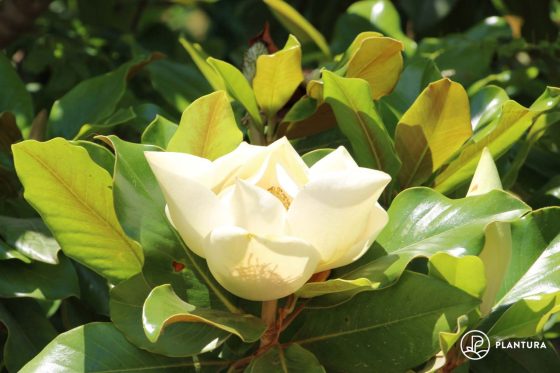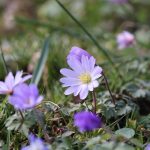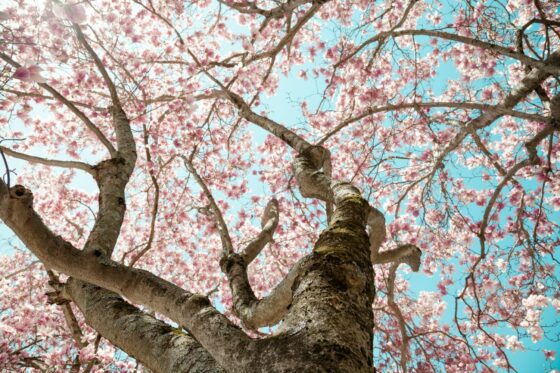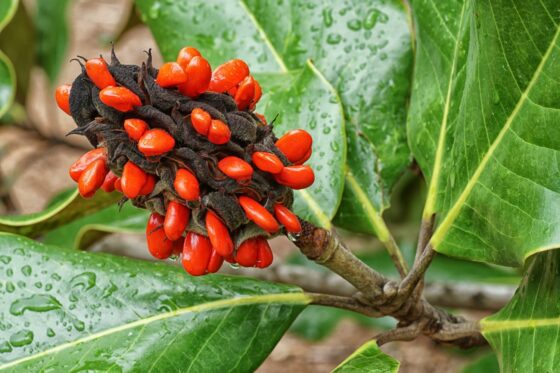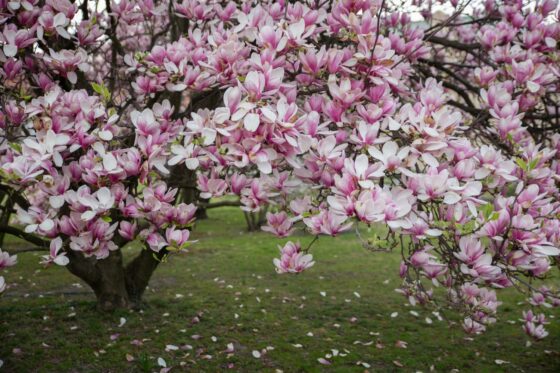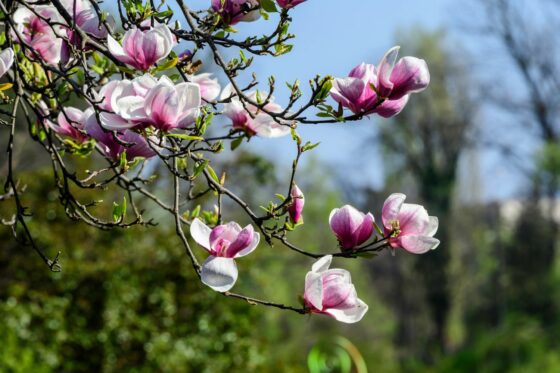Magnolia: planting, pruning & propagation of the magnolia tree
Magnolia trees enchant us with their flowers in spring. Let us show you what to consider when planting, propagating and caring for magnolias.

The magnolia (Magnolia) is a true gem among the trees. The perfect shape of these trees and their particularly fragrant blossoms make spring that much more beautiful.
Contents
Anyone who has ever seen a magnolia tree in bloom in the spring knows how it can make your day: the sight is overwhelming and the scent is simply incredible. But magnolia trees are not only a beautiful addition to botanical gardens and parks. This plant will enchant both you and passers-by even when planted in the garden.
Magnolia: significance and properties
Magnolias are fascinating plants – and there are several reasons for this: First, they have wonderful large flowers that spread a beguiling fragrance in spring and early summer. These flowers are also particularly striking in that they usually appear before the leaves sprout. On the other hand, magnolias are also very interesting from a historical point of view, because they are among the oldest flowering plants in the world. That is why their appearance is still quite original. The petals are arranged in an outward spiral, rather than in one or more rings as in most other flowering plants. The fruit of the plant also appears equally primitive. The small, deep red fruits hang from the cone-like and woody infructescence in small threads, but they are poisonous. Magnolias belong to the magnolia family (Magnoliacea) and are native to the Americas and East Asia. However, these evergreen or deciduous trees and shrubs have long been found in Europe as ornamental plants.

Magnolia species and varieties
There are more than 120 species of magnolia. So there is no lack of choice, because there are also various cultivars of the species. We have put together a small selection of species and varieties for you here:
- ‘Black Tulip’: this cross of several species has probably the darkest flowers among magnolias. Its colouration is between dark purple and crimson. This variety is hardy to -22 °C. It starts flowering from April onwards, which can unfortunately be a problem in regions with late frosts. However, in mild climates, it is a great garden tree that does not grow taller than five feet.
- Evergreen magnolia (Magnolia grandiflora): a special feature of this species is that it does not shed its leathery shiny leaves. Unfortunately, this species comes from regions with few frosts and so temperatures below -10 °C are dangerous for it.
- Purple magnolia (Magnolia liliiflora): purple magnolias remain rather small, with a maximum height of three metres. They are not only beautiful as individual specimens, but also in groups or even as a hedge. In May, purple flowers with long petals appear. They even bear some resemblance to the flowers of lilies. The intensely purple coloured ‘Nigra’ and ‘Susan’ variety.
- Star magnolia (Magnolia stellata): this species is originally from Japan. Its flowers shine pure white and resemble large stars due to their narrow petals. Because this species blooms early, the flowers are threatened by late frosts in some regions. However, the plant remains quite small, making it suitable for many gardens.
- Cucumber magnolia (Magnolia acuminata): the flowers only appear after the first leaves in this species, starting from May. These are greenish yellow with a hint of pink. While this species is not as showy as some other magnolias, it is quite insensitive to late frosts due to its late blooming. Its name is due to its cucumber-shaped fruits that appear after flowering. The ‘Blue Opal’ variety, whose petals are dark blue in colour on the outside, offers an interesting colour combination. When the flower then blossoms, there is a wonderful contrast with the green-yellowish coloured petals inside.

- Summer magnolia (Magnolia sieboldii): the summer magnolia also blooms late. Just as with the cucumber magnolia, the white flowers appear after the leaves in May or June. This also makes it perfect for areas with late frosts, especially since it is also very hardy.
- Tulip magnolia (Magnolia x soulangeana): this magnolia hybrid is the most popular magnolia planted in Central Europe. The flowers have a shape similar to that of tulip flowers. The plants can grow into trees up to nine metres high. While the varieties ‘Amabilis’ and ‘Linéi Alba’ are bright white, the flowers of ‘Alexandrina’ are pink at the base. ‘Rustica Rubra’, on the other hand, is almost dark in colour.
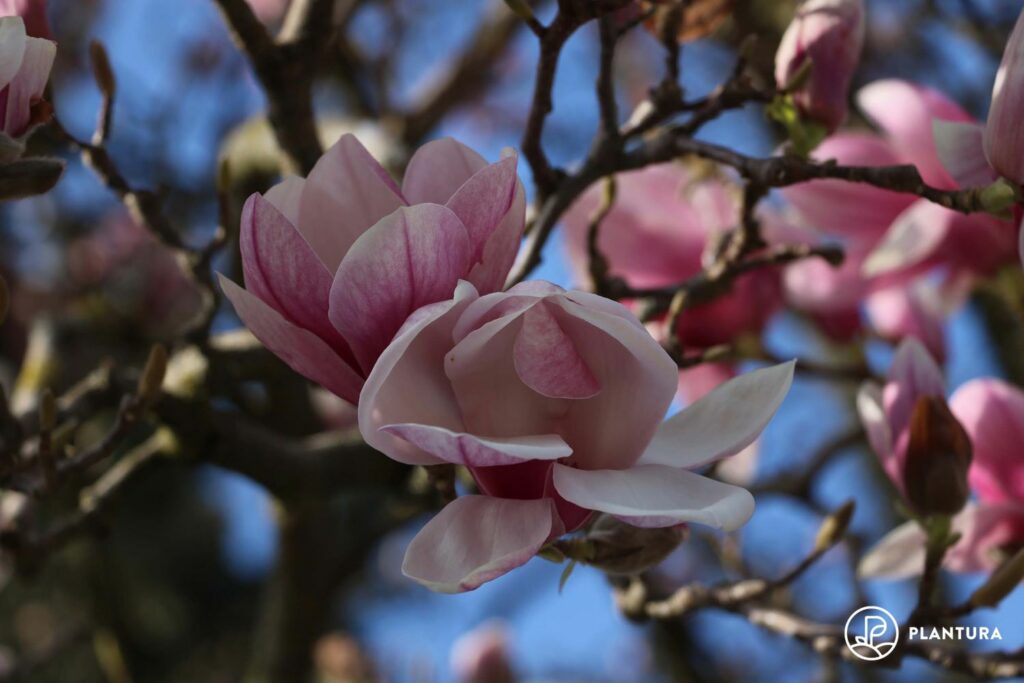
Planting magnolias
First of all, the location is crucial when planting magnolia. Plenty of sun, little wind and sufficient moisture are ideal conditions. Enrich the soil with acidic peat soil before planting to achieve the optimal pH. After planting, you should surround the base of the plant with bark mulch to protect the soil from drying out. The best time for planting is during the winter months. Detailed instructions for planting magnolia can be found here.
Propagation
You can easily propagate magnolias yourself. Of course, sowing seeds is exciting, but they need a cold stimulus before they can germinate. Alternatively, you can try cuttings. However, a high success rate can also be achieved with propagation via sinkers or by air layering. In general, the propagation of magnolias requires one thing – time. Magnolias tend to take things slowly when it comes to producing offspring. It can take years for a young plantlet to grow into a mature tree. Learn about individual methods of magnolia propagation, here.
Magnolia care
Magnolias do not require much care and usually do well on their own. Pests are hardly ever a problem with this plant. If the location is right, there is not much more the plant needs. Still, there are a few things to keep in mind.

Watering
Magnolias like it moist, so the base of the plant should be kept covered. If the plant is not in a field, you can remedy this with some bark mulch. Young plants in particular should be watered regularly. Older specimens have extensive root systems and can be quite self-sustaining. However they still need a little help in dryer conditions. The plant should be sufficiently watered, especially in autumn, when the magnolia is preparing its buds for spring, Waterlogging should be avoided at all costs.
Pruning magnolia
Magnolias should only be pruned when absolutely necessary. However, the plant should be left undisturbed for at least three years in between pruning. If you do decide to prune, late summer is the ideal time. Always cut troublesome, diseased or dead branches back to the trunk to promote wound healing. More details about pruning magnolias can be found here.
Fertilising magnolia
Fertilising magnolias is quite simple, in principle. In the spring, you can use a good amount of compost as a fertiliser, or work slow-release fertilisers like our Plantura All Purpose Plant Food into the soil. This way, the most important part is already done. For more information on fertilising magnolias, click here.

- Perfect for a variety of plants in the garden & on the balcony
- Promotes healthy plant growth & an active soil life
- Long-lasting fertiliser that is free from animal products - child & pet friendly
Why is my magnolia not flowering?
There are many reasons for a lack of flowering. Some plants are simply too young to flower. Other magnolias are in the wrong environment and therefore do not feel comfortable. Autumn drought or incorrect pruning can also be the because of a failure to bloom. However, frost is often to blame for the lack of flowering. Cold winters or late frosts in the spring can freeze the buds. Learn what you can do to encourage your magnolia to bloom again, here.



















